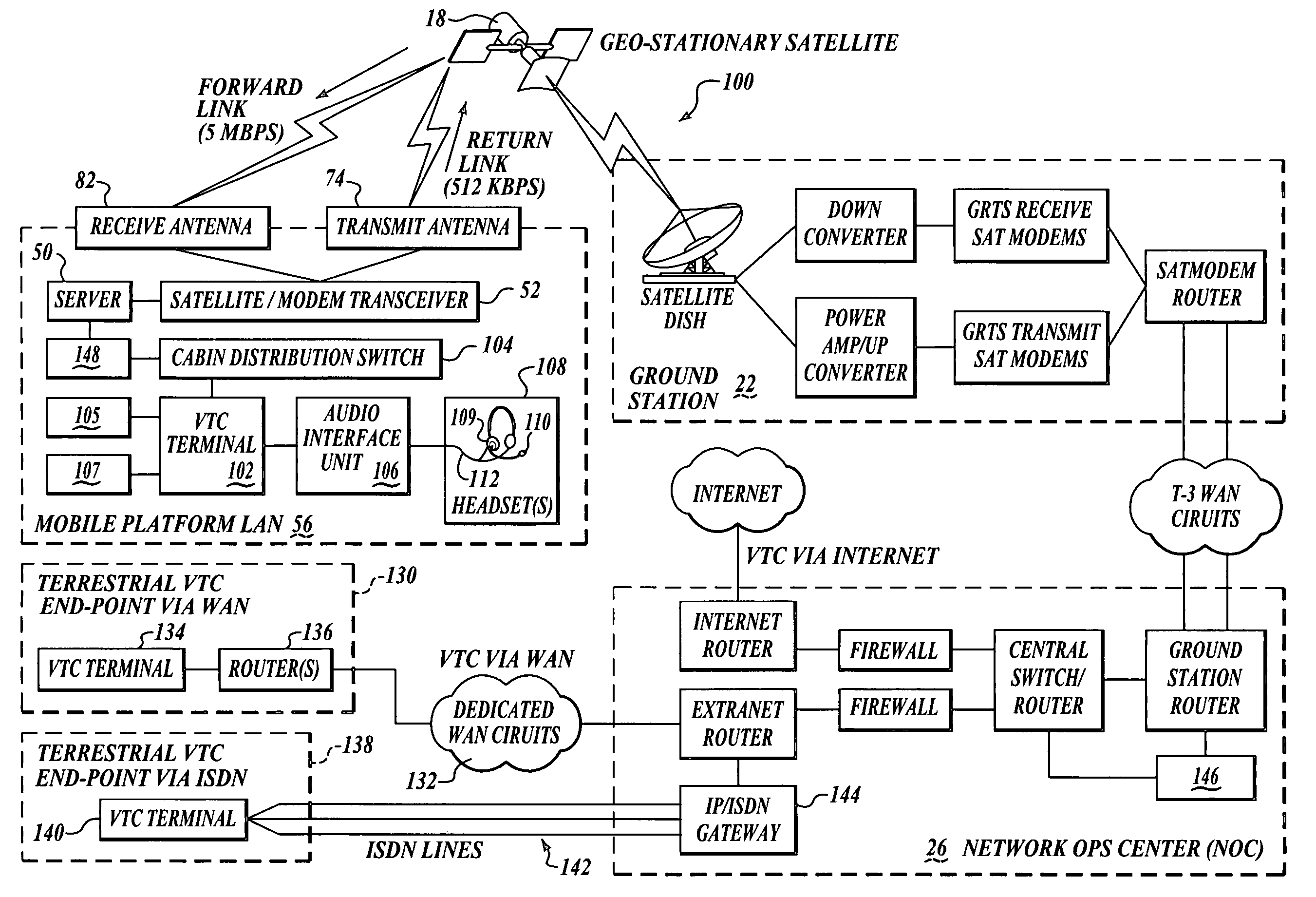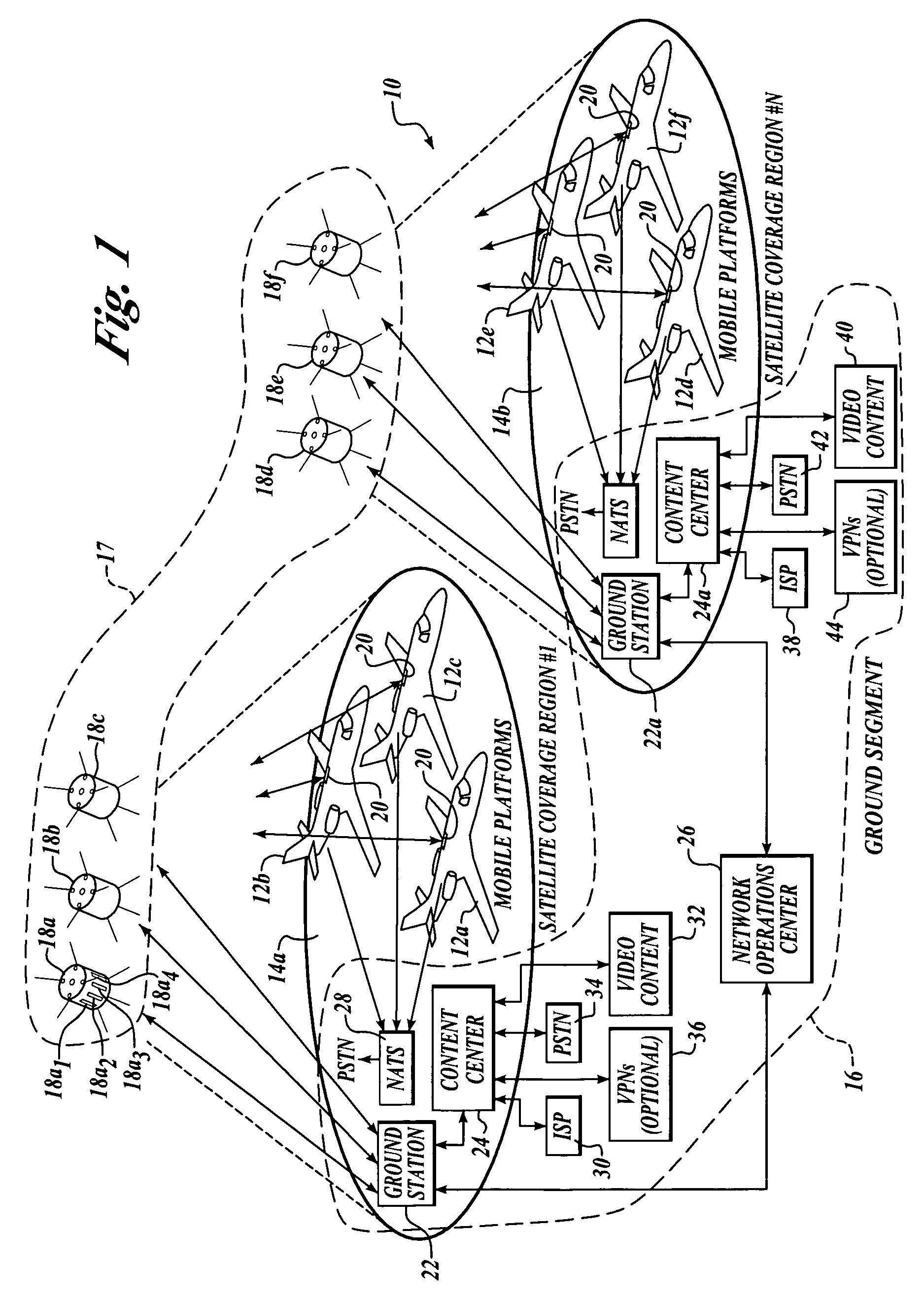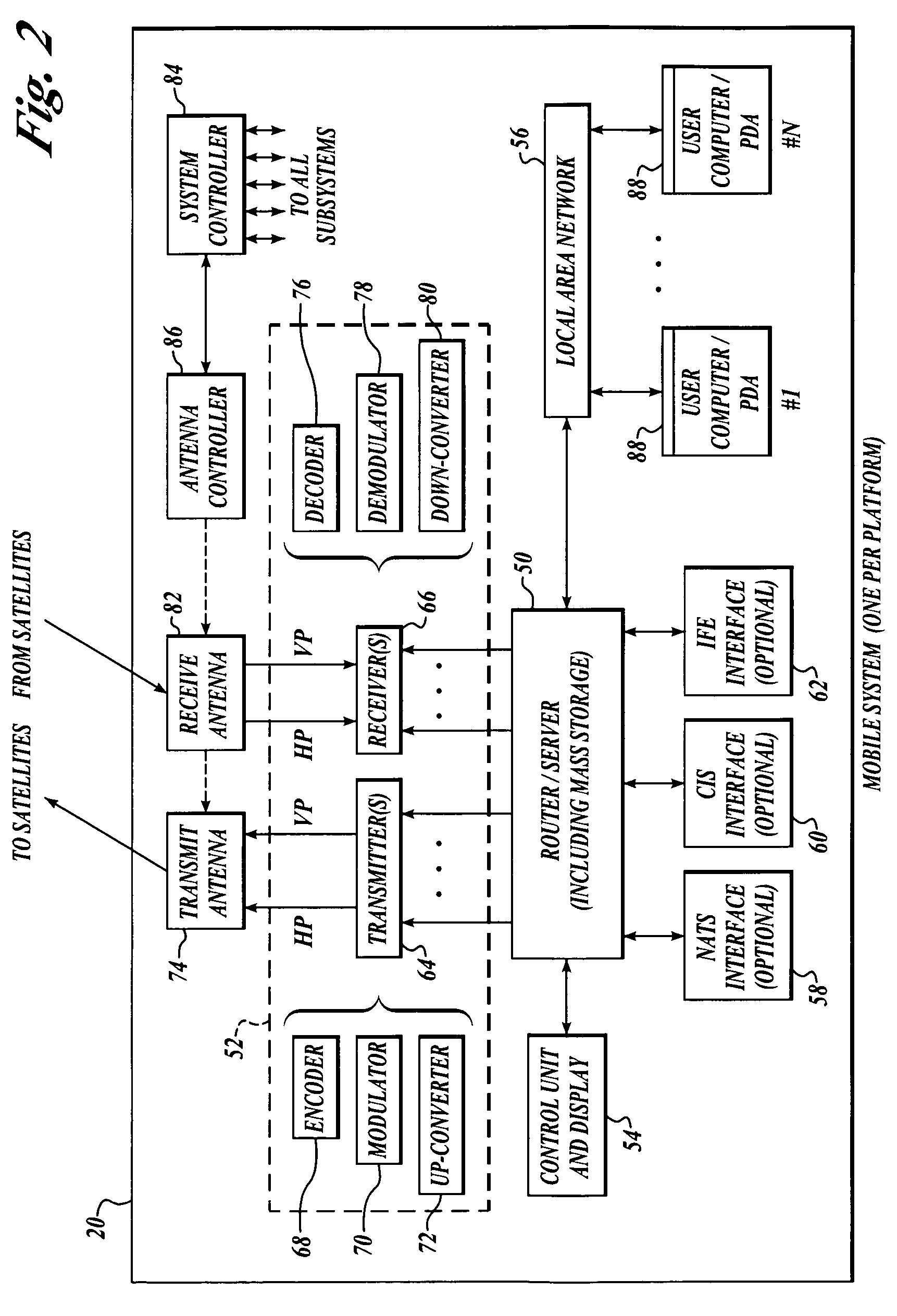Method and apparatus for bi-directional video teleconferencing on mobile platforms
- Summary
- Abstract
- Description
- Claims
- Application Information
AI Technical Summary
Benefits of technology
Problems solved by technology
Method used
Image
Examples
Embodiment Construction
[0026]By way of overview, embodiments of the present invention provide bidirectional video teleconference services on a mobile platform. Referring briefly to FIG. 3 for an overview, a first video teleconference terminal is disposed on a mobile platform. A first local area network is arranged to provide network data services on the mobile platform and is arranged to communicate with the first video teleconference terminal. A second local area network is arranged to provide network data services and is arranged to communicate with a second video teleconference terminal. The first and second local area networks are in bidirectional packet data communications, and packets of video teleconference data are prioritized over packets of data for services other than video teleconferencing.
[0027]Exemplary embodiments of the present invention will be described in greater detail below. However, to provide a non-limiting context for understanding the present invention, an exemplary, non-limiting ...
PUM
 Login to View More
Login to View More Abstract
Description
Claims
Application Information
 Login to View More
Login to View More - R&D
- Intellectual Property
- Life Sciences
- Materials
- Tech Scout
- Unparalleled Data Quality
- Higher Quality Content
- 60% Fewer Hallucinations
Browse by: Latest US Patents, China's latest patents, Technical Efficacy Thesaurus, Application Domain, Technology Topic, Popular Technical Reports.
© 2025 PatSnap. All rights reserved.Legal|Privacy policy|Modern Slavery Act Transparency Statement|Sitemap|About US| Contact US: help@patsnap.com



